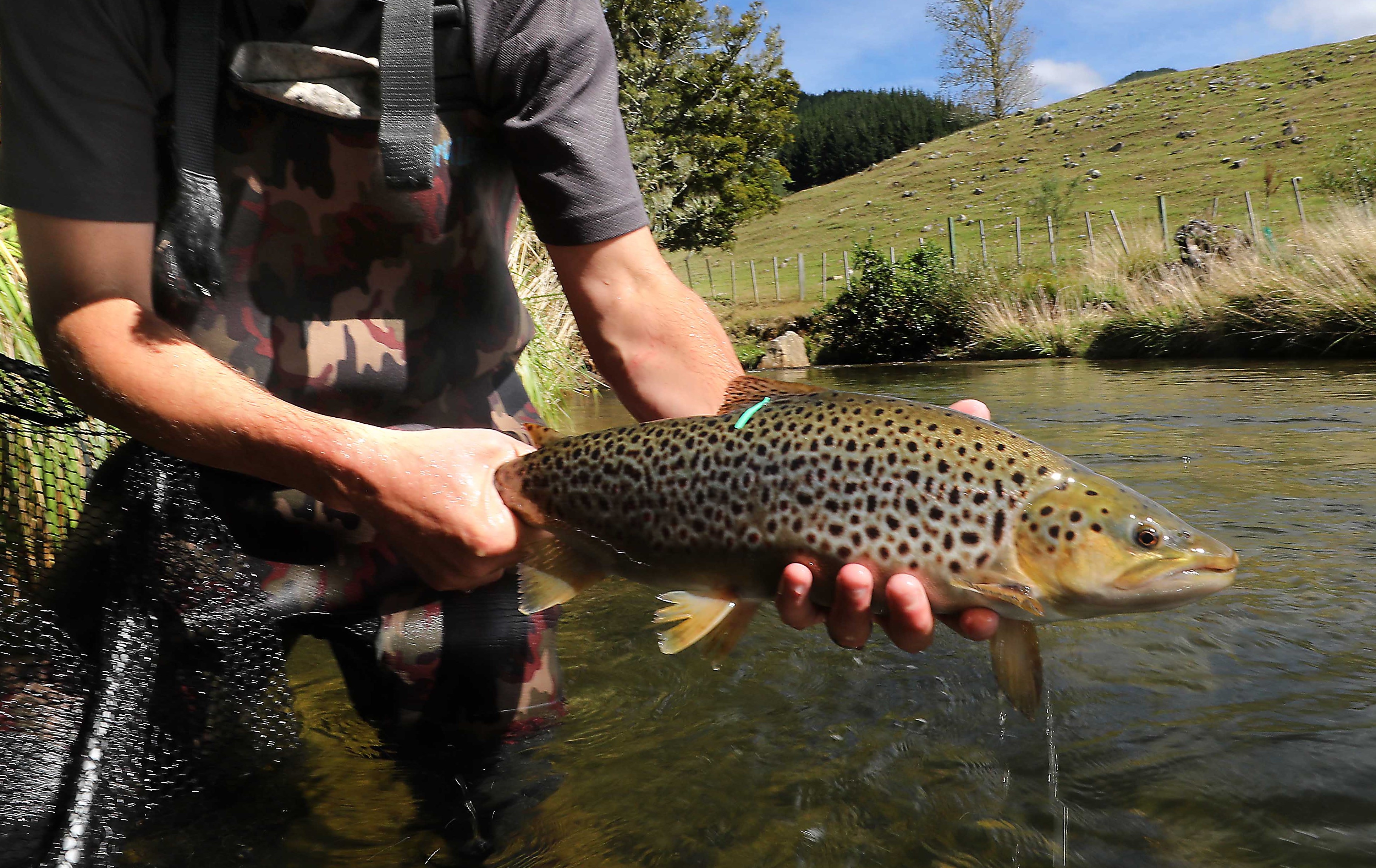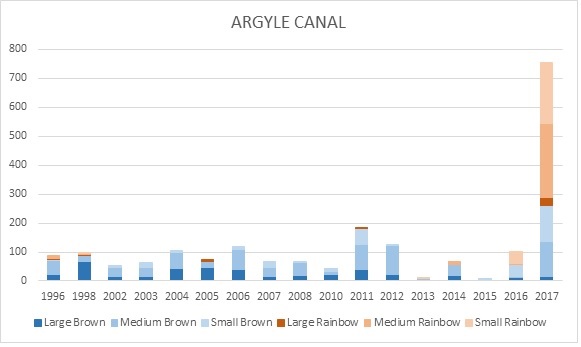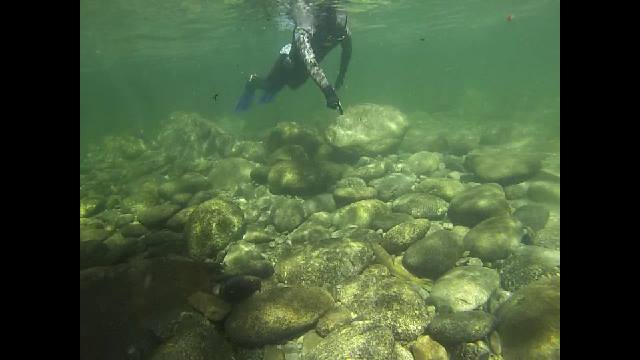Nelson Marlborough Reel Life Mar 2017
- 31/03/2017
- Richie Cosgrove
Browns released to Riuwaka River
Trout flying bright green streamers were released into the Riuwaka River during a day long operation in mid-March.
one hundred and fifty brown trout which had been raised from fish caught in an adjoining tributary were tagged, trucked and released into multiple sites throughout the Riuwaka River by Nelson/Marlborough by Fish & Game staff.
Right: 150 tagged trout were recently released into the Riuwaka River.
The release was carried out in order to try and boost the flagging population in this river, which was once a superb fishery.
The fish that were released were part of 1000 fish had been electrically fished from a Motueka River tributary so are effectively the same genetic stock.
The trout were taken over to the Wairau Valley where they were raised in ideal conditions by Pieter Wilhelmus in his hatchery to improve their chances of survival.
The average weight for the fish was 1.1 kilograms, however a number of fish around the 2kg mark were included.
Left: The trout have been tagged with either green or yellow streamer tags.
Fish & Game staff will use this research project to investigate 'recruitment' issues in the fishery.
Staff believe the decline over the past decade or more is due to a mix of devastating flood events, as well as human influences such as willow removal and unsympathetic river engineering works.
With the trout only able to spawn in the main stem of the Riuwaka River, there have been issues with juvenile trout recruitment and the trout population has suffered.
Fish & Game asks that anglers who catch the tagged trout release them if possible in the first year, and let us know the tag number, date, time and location that the fish was caught.
This will enable Fish & Game staff to track the movement of the fish, and is essential for the future of the project.
If you are spin fishing, please remove treble hooks and replace with a single (preferably barbless) hook. The project will run for the coming three years.
To see some video action of the release, visit: https://www.facebook.com/FishandGameNZ/videos/1437665432972019/?hc_ref=PAGES_TIMELINE
Drift dive summary
Fish & Game staff have had a busy few months since Christmas undertaking annual population census within many of our trout fisheries.
So far this summer we have dived a total of 34 dives on 24 Nelson-Marlborough waterways.
The results of all these dives are reported in detail our annual fisheries report (contact the Fish & Game office if you would like to see a copy of the report).
This year Nelson-Marlborough staff also assisted West Coast Fish and Game with dives in their newly designated back country fisheries – the Karamea and Mohikinui, which was the first time in many years these systems have been monitored.
A wet spring and summer appears to have been good for small fish growth rates, however it will not have been good for recruitment into future fish populations.
Cawthron research on the Motueka River shows that high flows in October/November have a detrimental impact on future counts of medium and large fish within the six dive sites (1 km each) that are run on this river every year.
In fact this spring and summer has been the opposite from last year’s El Nino induced weather which at the time saw the Motueka reach December flows by October!
Last year’s El Nino spring/summer saw large numbers of small fish counted during the 2015/16 drift dive season, many of which have now translated into large numbers of small/medium fish now within some of our river systems, boding well for future angling.
A standout dive this year was undoubtedly the massive numbers of trout observed within the Lake Argyle canal, where staff noted it was like counting “walls of fish”.
Below: Record trout counts were seen in the Argyle Canal this year.


Nelson / Marlborough staff have had a busy season drift diving.
Salmon head reminder
Salmon heads are still required for two important research initiatives in conjunction with the Cawthron Institute and NMIT.
A number of heads have been handed in but we still need more to be able to complete a decent sample size.
If you catch a salmon or two, please freeze the head, recording sex, fork length and rough location.